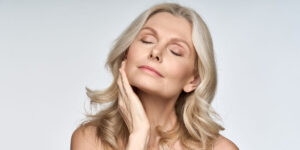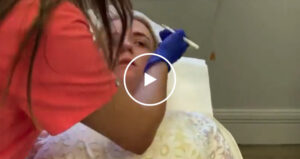What affects skin around the eyes and how best can you improve this sensitive area?
The delicate eye area is a concern for most men and women at some point – be it dark circles, puffiness, lines or bags. Whether you prefer to conceal issues using great eye makeup and skincare or have aesthetic treatments, read on to learn more about what impacts this unique facial zone. Dr Saira shares her expert know-how:
What is the main cause of dark under eye circles and lack of radiance?
Dark circles are a common aesthetic complaint and remain one of the most challenging to treat due to their multifactorial nature. The delicate skin of the eye contour area is unique as it differs in its anatomy and physiology when compared to other facial zones. There are very few supporting fat cells in this region and the overlying skin layers are thin and fragile. This leaves the under eye area vulnerable to damage and sensitive to premature ageing processes which can lead to a tired and lacklustre appearance. Sluggish circulation and lymphatic drainage around the eye contour contribute to dark circles and puffiness. There is a strong genetic predisposition and those with darker skin types are more prone to dark circles due to increased levels and visibility of melanin (pigment) under the delicate under-eye tissues. Sun damage and photoageing can further accelerate this process giving rise to pigmentation and textural problems including fine lines and wrinkles. Age-related processes that occur in the peri-orbital region, such as loss of fat and gravitational “sinking” of tissues, give rise to the “tear trough deformity”. This presents as hollowing underneath the eyes, eye bags and dark shadows – all of which contribute to a fatigued appearance. Poor nutrition, inadequate hydration and lack of sleep all exacerbate the appearance of dark circles and loss of radiance. This is largely attributed to the fact that this vulnerable area is the first to reflect poor overall skin cell health and cannot tolerate environmental stress and damage when compared to other areas.
Can products improve the brightness and radiance of the eye area?
Skin care products which target hyperpigmentation, skin elasticity, hydration, sun exposure and textural problems such as crepey skin can revitalise the eye area and improve the appearance of dark circles. However it is important to remember that due to the multifactorial nature of this concern, taking a multimodal approach to treatment is preferable.
For example both skin changes and volume loss contribute to appearance of dark circles. Eye creams can improve the condition of the skin in the peri-orbital region, but will not address the true hollowing of the tear trough deformity.
Volume loss can be corrected with temporary hyaluronic acid fillers such as Volbella or Teosyal Redensity II to smooth out the tear trough hollows.
What ingredients should you look out for in your eye cream to brighten?
With so many eye creams on the market competing against one another it is difficult to know where to focus your attention. Key ingredients that brighten the skin include antioxidants such as Vitamin C, which protect the vulnerable skin of the under eye area by combatting oxidative stress and neutralising free radicals which are damaging to skin cells and accelerate premature ageing. Hyaluronic acid is a water binding molecule which acts to hydrate the skin by locking in moisture deep into the skin. Hydration is key as it instantly plumps and firms the skin reducing the appearance of fine lines and wrinkles and improves circulation. Retinol is also beneficial as it is a potent stimulator of collagen and accelerates the skins natural exfoliation process resulting in fresher, tighter and brighter looking skin. It is imperative that you only use preparations that are specifically formulated for use on the eye area. The use of Caffeine in eye creams and serums have become popular in recent years as reduces the appearance of puffiness by reducing congestion and fluid retention in the delicate under eye area. Broad spectrum UVA & UVB protection is also advocated to prevent sun damage and pigmentation disorders.
Recommendations: AOX Eye Gel, Heal Gel Eye
Is it possible to overload the skin with too much product, which can then darken the area?
When applying skin care products to the eye area it is important to be aware that they should only be applied to the margins of the orbital rim. This means the uppermost point of the cheek bone and the lower part of the brow bone. As previously mentioned, the skin of the eye zone is thin and delicate and the blood and lymphatic circulation in this zone can be lazy. Inappropriate use or overuse of eye creams can actually worsen puffiness and dark circles as they are easily absorbed but cannot be cleared by lymphatic drainage as easily.
Are there any particular treatments that could brighten eyes and improve the radiance?
At The WY Skin Clinic, we take a 360° approach to peri-orbital rejuvenation. Treatments are aimed at addressing skin changes, volume loss and loss of elasticity. Hyaluronic acid fillers are used to correct tear trough deformities and revitalise the overlying skin by increasing its hydration and light-reflecting ability. Botulinum toxin A can be used to relax the contraction of certain muscles which give rise to fine lines and wrinkles in the eye region. Additionally, energy based treatments such as radiofrequency skin tightening and fractional skin resurfacing (FSR) can rejuvenate the eye area and enhance the results you get from your topical and injectable treatments by stimulating the production of collagen and improving the overall tone and the texture of your skin.






